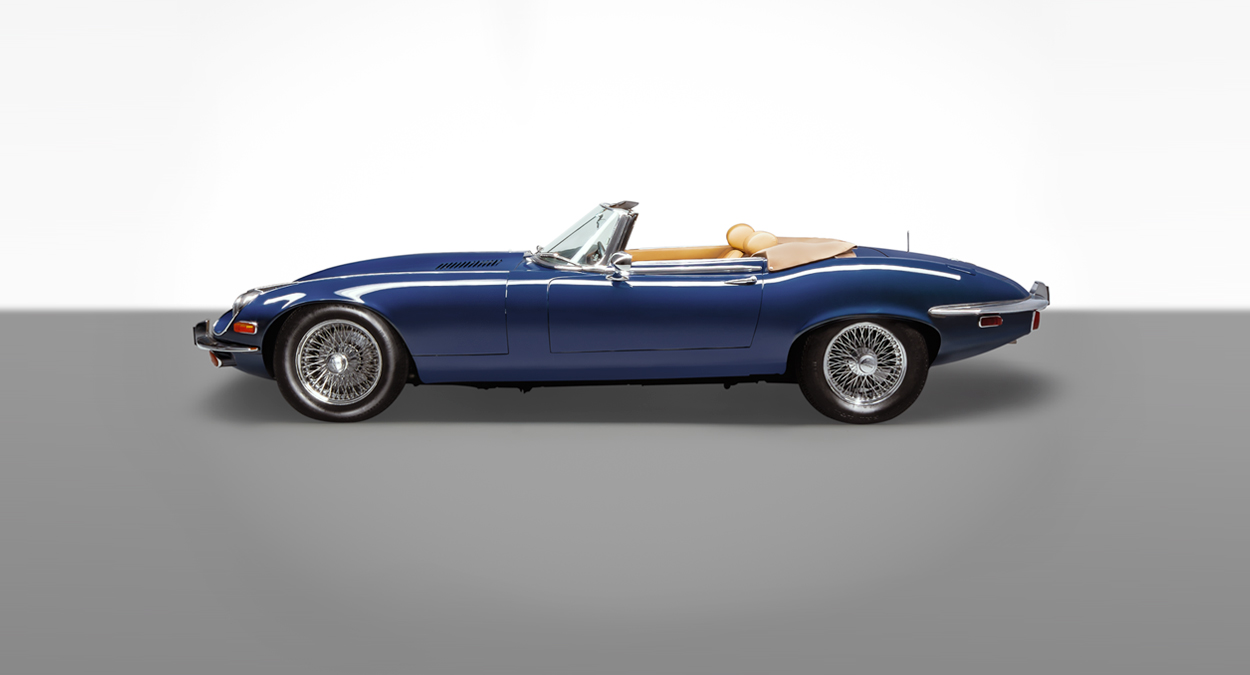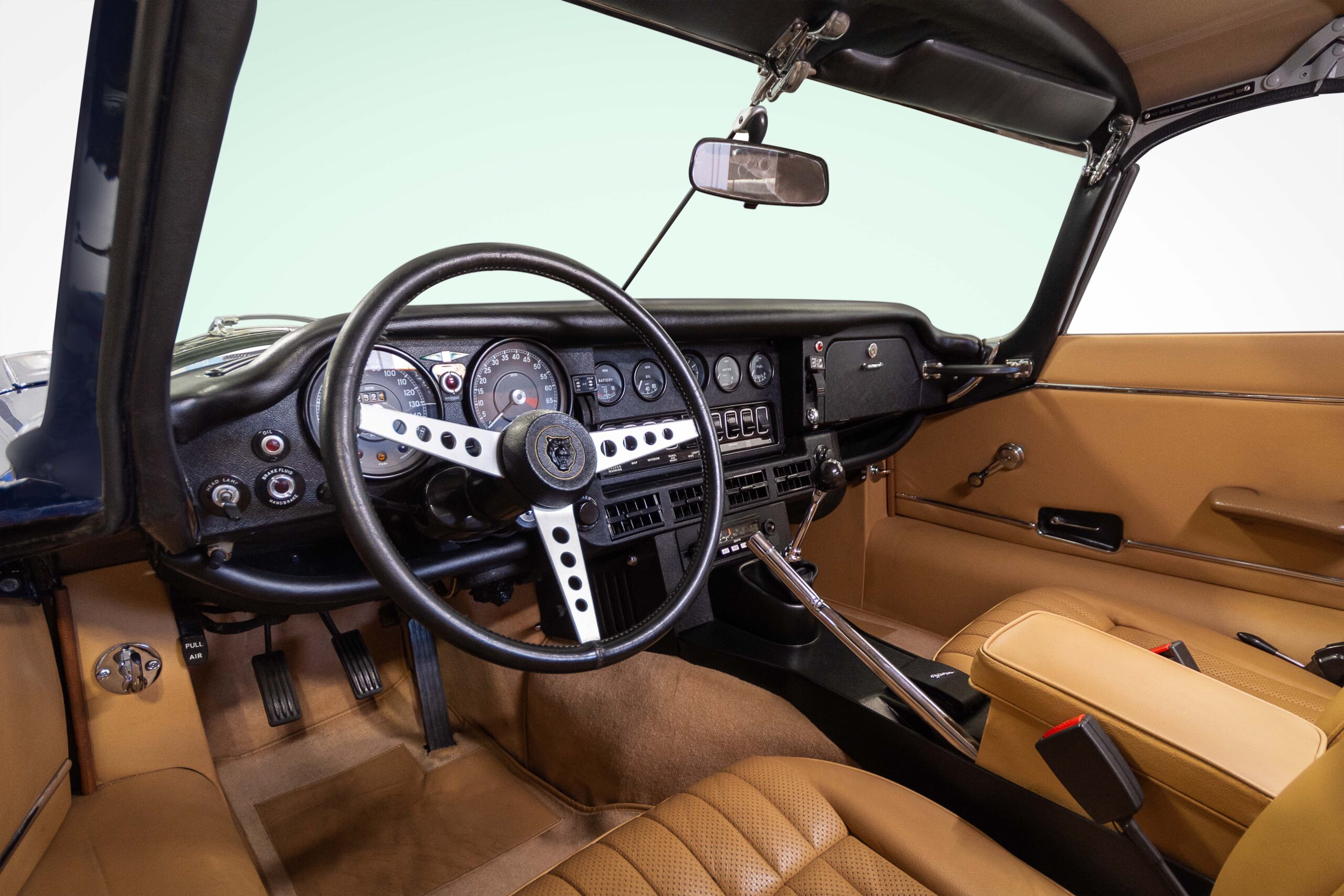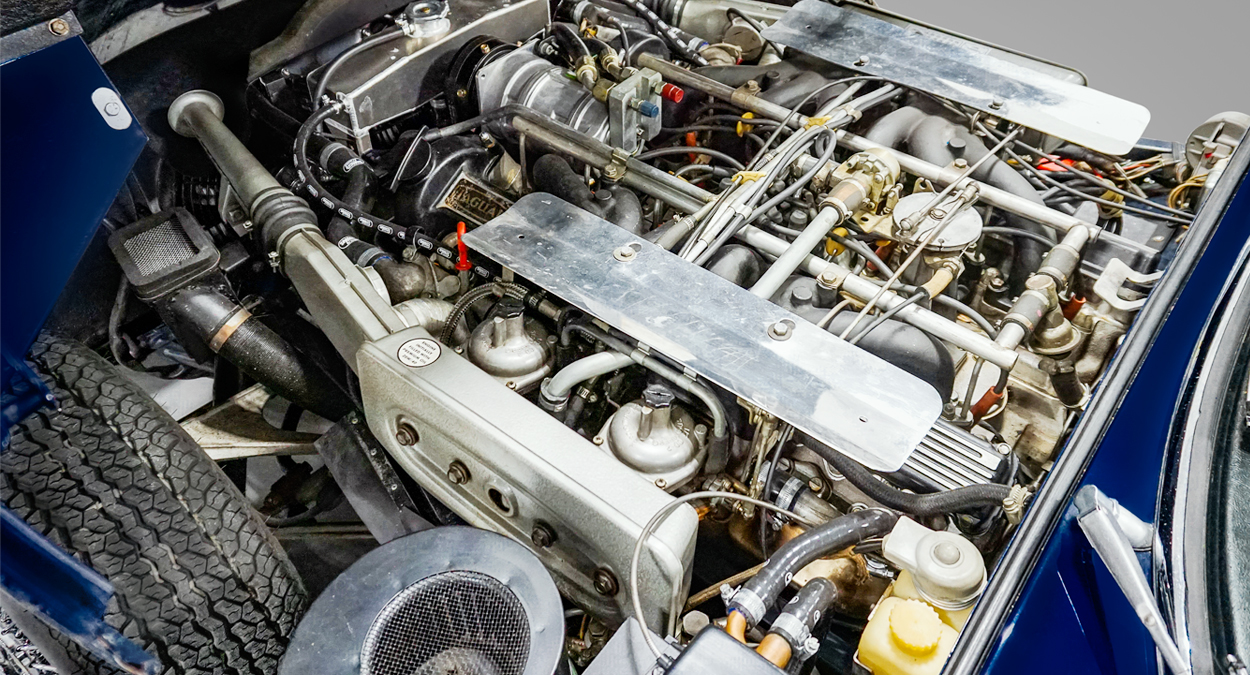

1972 Jaguar XKE V12
Click any photo to view fullscreen. Mobile users can pinch to zoom. Tap ‘X’ to close.
SPEED
SPECIFICATIONS
- Mileage 47285
- V12 5.3-Litre 24 valve Engine
- Zenith Stromberg Naturally Aspirated Dual two-barrel-Quad Side Draft Carburetor Spark-Ignition 4 stroke
- Zenith-Stromberg 175 CD2SE SOHC
- Engine Compartment Twin Electric Cooling Fans
- Factory Air and Power steering
- 105” Wheelbase
- US Bumpers and US side indicator turn signal
- 15 × 6K wire wheels
1972 Jaguar XKE V12
The Jaguar E-Type, or the Jaguar XK-E for the North American market, is a British sports car that was manufactured by Jaguar Cars Ltd between 1961 and 1975. Its combination of beauty, high performance, and competitive pricing established the model as an icon of the motoring world. The E-Type’s claimed 150 mph (241 km/h) top speed, sub-7-second 0 to 60 mph (97 km/h) acceleration, unitary construction, disc brakes, rack-and-pinion steering, and independent front and rear suspension distinguished the car and spurred industry-wide changes. The E-Type was based on Jaguar’s D-Type racing car designed by William Heynes, which had won the 24 Hours of Le Mans three consecutive years beginning 1955, and employed what was, for the early 1960s, a novel racing design principle, with a front subframe carrying the engine, front suspension and front bodywork bolted directly to the body tub. No ladder frame chassis, as was common at the time, was needed and as such the first cars weighed only 1315 kg (2900 lb).
On its release on 15 March 1961 Enzo Ferrari called it “the most beautiful car ever made”. In 2004, Sports Car International magazine placed the E-Type at number one on their list of Top Sports Cars of the 1960s. In March 2008, the Jaguar E-Type ranked first in The Daily Telegraph online list of the world’s “100 most beautiful cars” of all time.
The Series 2 introduced a number of design changes, largely due to U.S. National Highway Traffic and Safety Administration mandates. The most distinctive exterior feature is the absence of the glass headlight covers, which affected several other imported cars, like the Citroën DS, as well. Unlike other cars, this step was applied worldwide for the E-Type.
Other hallmarks of Series 2 cars are a wrap-around rear bumper, larger front indicators and taillights re-positioned below the bumpers, and an enlarged grille and twin electric fans to aid cooling.
Additional U.S.-inspired changes included a steering lock which moved the ignition switch to the steering column, replacing the dashboard mounted ignition and push button starter, the symmetrical array of metal toggle switches replaced with plastic rockers, and a collapsible steering column to absorb impact in the event of an accident. New seats allowed the fitment of head restraints, as required by U.S. law beginning in 1969.
The engine is easily identified visually by the change from smooth polished cam covers to a more industrial “ribbed” appearance. It was de-tuned in the US with twin two-barrel Zenith Strombergs replacing three SUs. Combined with larger valve clearances horsepower was reduced from 265 to 246 and torque from 283 to 263.
Air conditioning and power steering were available as factory options.





